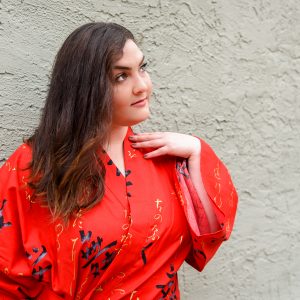The Kimono is a traditional Japanese garment. It has become a symbol of timeless fashion and elegance around the world. With its intricate embroidery, beautiful prints, and unique designs, this piece of clothing has caught the attention of fashion enthusiasts across the globe. However, when it comes to the cost of a kimono, it can vary drastically amongst different brands and designers. In this blog post, we’ll delve into the world of clothing prices, debunking common myths and uncovering how the cost of a kimono is set.
The cost of a kimono depends on various factors. These include materials used, designer, pattern making, trims, sewing, handwork, packaging, duties, and shipping. The quality of the materials used in a kimono determines its durability and longevity. The higher the quality of materials, the higher the cost of the kimono. The same applies to the designer of the kimono. If you’re purchasing a designer kimono, you can expect to pay more due to the prestige of the brand.
Price tags can be a mystery for many shoppers, especially when it comes to clothing. What makes a $200 blouse different from a $20 one? And why is there such a massive price gap between two similar-looking kimonos? The truth is, pricing isn’t always straightforward, particularly in the fashion industry.
The process of pattern making, sample creation, and sewing all of these into a kimono also determines its cost. The intricacy of the design or pattern, the number of seams, and the fabric’s thickness influence the number of labor hours required to create the garment. The more the labor hours, the higher the cost of the kimono.
The packaging, duties, and shipping of a kimono all incur additional costs that are worth considering. For instance, if you’re purchasing a kimono from a different country, you may be required to pay import duties, which you should factor into the total cost of the kimono.
Understanding the various factors in the entire process, can help you make informed decisions about your purchase. First and foremost is the fabric. A silk kimono will typically be more expensive than a cotton one, as the cost of raw materials is higher. The complexity of the design is also a factor. A custom-designed, hand-printed kimono with intricate details will likely be more expensive than a simple, mass-produced one. The length and weight of the kimono can also affect the price. They influence the amount of fabric and resources needed for production.
Additionally, the brand and retailer’s markup can significantly impact the cost. Popular designer brands and high-end boutiques often carry a hefty markup on their clothing to reflect their exclusivity and prestige. On the other hand, smaller, independent brands may have more transparent pricing models, reflecting their values of ethical and sustainable production. It’s crucial to research the brand and consider its values and practices before making a purchase.
The perceived “value” of a kimono is another essential component of pricing. Shoppers are willing to pay more for clothing that is perceived to be of high quality, has unique designs, or holds sentimental significance. This perceived value is often enhanced through marketing and branding efforts. These can drive up demand and prices for a particular kimono.
Lastly, production costs, taxes, and other expenses also contribute to the final cost of a kimono. While a brand may strive to keep prices reasonable, it must cover its overhead costs to ensure the viability and growth of its business.
In conclusion, the right cost for a kimono depends on many factors. The cost of a kimono is complex and multi-faceted. It’s essential to understand that the beautiful prints, intricate embroideries, and unique designs found in a kimono are the result of countless hours of work and significant resources. The cost of a kimono also accounts for the brand’s reputation, the designer’s experience, and the quality of materials used.
When purchasing a kimono, one should consider all these factors and ensure that the price tag is commensurate with the garment’s quality. By understanding the various factors that impact pricing, shoppers can make informed decisions about their purchases and support brands that align with their values. Whether you’re seeking a luxury designer kimono or a sustainably made, independent one, there is always a fair price that reflects the quality, value, and resources that went into its production.
Chopa – Your Kimono Source has been a leading online provider of authentic Japanese Kimonos and Yukatas since 1994. They have perfected online kimono shopping through their vast experience and quality offerings. Chopa was one of the first to offer Plus-sized and Big and Tall Kimonos. Chopa rewrote the idea that “one size fits all” or “one size fits most.” While often copied and frequently plagiarized by competitors, Chopa stands firm in their commitment to offer quality robes at reasonable prices. It’s a formula that has worked for nearly three decades.





